The South Pacific’s rollcall of writers and rascals
The tropical islands have drawn some of the art and literary world’s most iconic figures. Here’s 10 of the best – and worst.
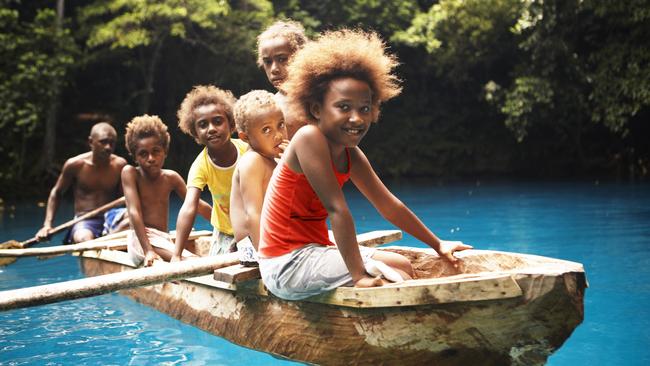
The South Pacific has drawn some of the art and literary world’s most iconic figures since the 18th century. Here’s 10 of the best – and worst.
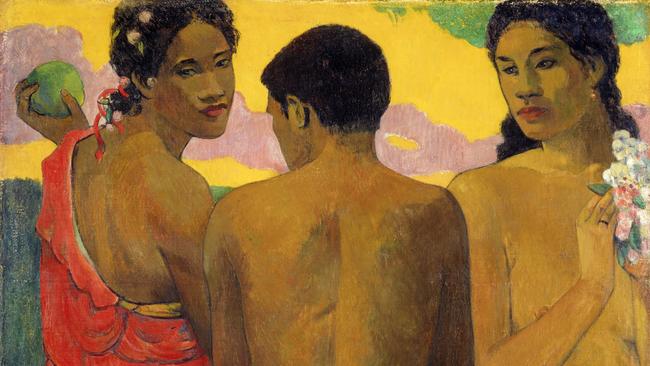
1 TROUBLE IN PARADISE
Perhaps the most infamous of all was French painter Paul Gauguin, who lived and died on Hiva Oa, an island within the Marquesas, 1500km northeast of Tahiti. Gauguin had first moved to Tahiti in 1891, producing some of his best-known works while causing havoc with locals by marrying under-age Tahitian girls and fathering multiple children. Seeking an even more drastic refuge, he sailed to one of the world’s most isolated archipelagos. Travellers can visit his former house and grave; there’s no cross, just a nondescript plaque that simply reads: “Paul Gauguin 1903.” It’s perched between frangipani trees with a heck of a view of the ocean. Hiva Oa has a small airport but limited accommodation; visit instead on combined passenger-supply ship Aranui 5, seen most recently acting as a floating hotel for surfers and officials at Teahupo’o during the Olympic Games.
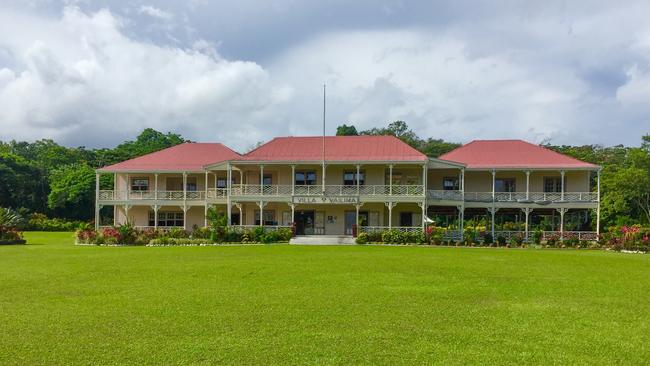
2 TREASURE ISLAND
While Gauguin repulsed locals, Scottish author Robert Louis Stevenson was adored. With failing health, he set off from San Francisco aboard a chartered yacht in 1888 to find his perfect South Seas home. He sailed through Hawaii and French Polynesia but found his place on Upolu in Samoa in 1890. He built a grand homestead in the hills behind the capital, Apia, spending time with locals who called him Tusitala, the Teller of Tales. When he died four years later at 44, locals carved a path through the forest to bury him at the highest point on a hillside overlooking the sea. His tomb reads: “Here He Lies, Where He Longs To Be, Home Is The Sailor, Home From The Sea.” Visitors can tour the homestead, now a museum, see his tomb, and stay nearby at Sheraton Samoa Aggie Grey’s, which was frequented by mid-century Hollywood stars.
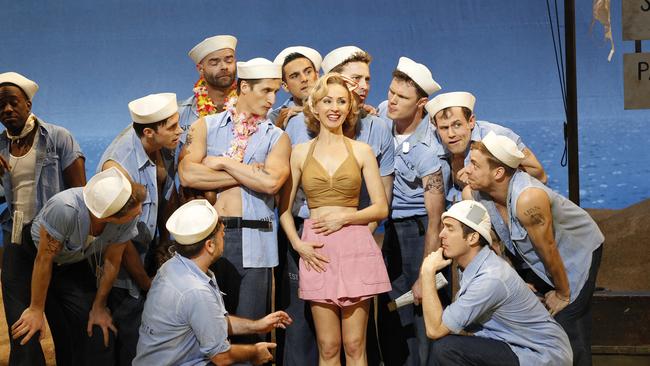
3 ENCHANTED EVENINGS
There’s no more romantic depiction of the South Pacific than the musical of the same name, inspired by Robert A. Michener’s Pulitzer prize-winning novel, Tales of the South Pacific. Michener was based in Vanuatu in World War II, and his experiences are captured in the book. Of particular focus in the decades since has been the real-life setting of his mythical island, Bali Hai. Everywhere from Bora Bora to Kauai in Hawaii has claimed it, but it’s widely believed to be the isle of Ambae, visible from Espiritu Santo’s east coast. Visiting Espiritu Santo is like returning to Michener’s South Pacific. Activities include scuba diving on one of the world’s best-preserved World War II wrecks, SS President Coolidge, and taking dirt roads to the likes of Champagne Beach, one of the Pacific’s best. Stay at Lonnoc Eco Beach Bungalows, with “Bali Hai” on the horizon.
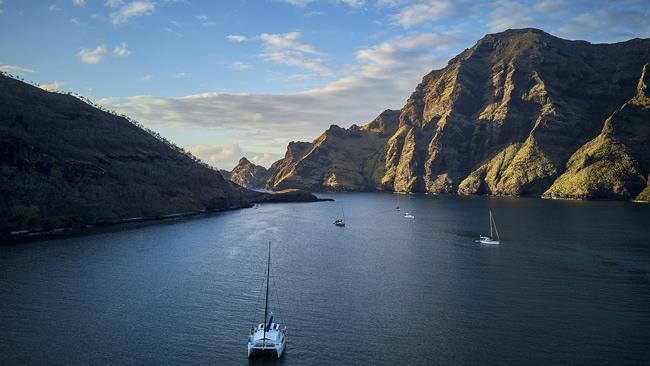
4 UNDER A SPELL
For a chance to feel as if you’re truly living within the pages of a South Seas novel, nothing beats exploring the backdrop of Herman Melville’s Typee. Written five years before Moby Dick, Typee depicts the months that Melville spent among cannibals after absconding from a whaling ship on Nuku Hiva in French Polynesia. More popular than Moby Dick during his lifetime, Typee inspired adventure author Jack London to visit 60 years later, in 1907. “In the morning we awoke in fairyland,” London writes. Fly direct from Tahiti and you’ll discover an island of pristine forests with rugged hiking trails right through Melville’s Typee Valley. There are tiki structures, petroglyphs, stone platforms, and occasionally, human skulls in banyan trees. “Over the landscape there reigned the most hushed repose … a single syllable might dissolve the spell,” Melville wrote. Le Nuku Hiva has bungalows near Typee Valley.
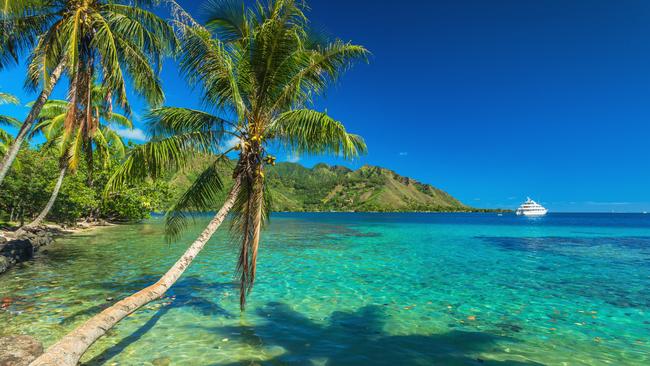
5 NOBLE ONES
Tahiti has been at the heart of the Western world’s fascination with the South Seas since the 1700s. One man, and his book, was largely responsible. French explorer Louis-Antoine de Bougainville sailed to Tahiti on his circumnavigation of the world in the 1760s, and went on to publish his log, A Voyage Round the World. When describing his arrival in Tahiti, he wrote: “I feel as I have been transported into the Garden of Eden.” He called the island the New Cythere, invented the concept of the noble savage, and inspired a million fantasies by comparing the naked local women with Venus and the musclebound men with Hercules. The Tahiti that Bougainville depicted centuries ago still largely exists today on Tahiti-Iti, an islet connected to the main island by a land bridge. Here, the road stops at tiny villages and wilderness prevails. Vanira Lodge, at the aforementioned Teahupo’o, has a range of accommodation options to choose from, including traditional “fare” on stilts.
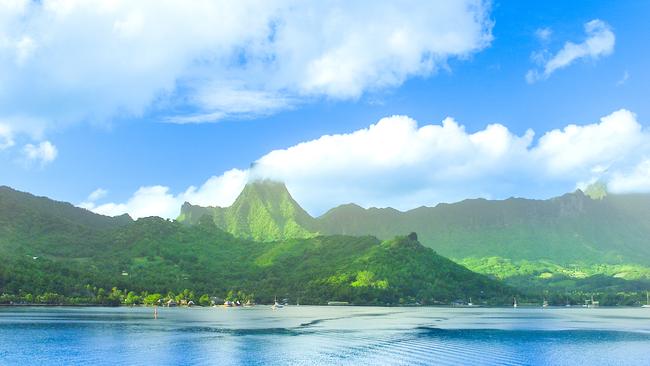
6 SORDID AFFAIRS
Another painter with a reputation for being a hard-drinking, womanising expatriate was the so-called father of velvet painting, American Edgar Leeteg. After moving to Moorea, 20km from Tahiti, in 1933, his paintings featured partially (and often completely) naked Polynesian women against stunning tropical landscapes. First seen in tiki bars across the US, his work attracted hundreds of thousands of dollars. While his sordid lifestyle had him compared with Gauguin, the seductive images he produced only added to the allure of the South Pacific. Visit Leeteg’s Moorea, which has none of Tahiti’s urban sprawl. It is best experienced from a bungalow on the lagoon, overlooked by eight towering mountain peaks. Drive around the heart-shaped coastline to savour views that motivated Leeteg to stay for 20 years, until his last drunken motorbike ride in 1953, at the age of 48. The Sofitel Kia Ora Moorea Beach Resort is a short ferry ride from Papeete.
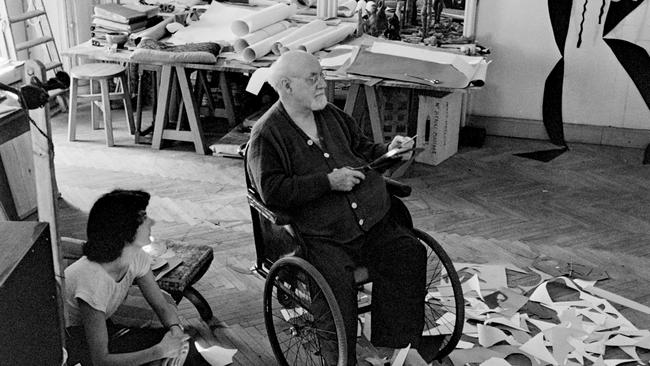
7 LIVING ART
It was Tahiti that inspired painter Henri Matisse. The French artist took a mail boat there in 1930, and stayed in a hotel in the capital, Papeete, overlooking its harbour. He described the sea from his window: “So blue, it made the sky seem pale.” Matisse produced only sketches, not paintings, from his 10-week stay. However, a decade or so later, Tahiti helped to spawn the technique that defined his brilliant last years, using nothing but scissors and painted sheets of paper based on tapa, the patterned bark cloth made by Polynesian women. Do as Matisse did, swimming in lagoons he considered “one of the seven wonders of the Paradise of painters”. Find artistic inspiration in the light and enchantment of the Tahitian sky. Avoid modern-day Papeete in favour of the bungalows at the nearby InterContinental Tahiti Resort, built over ocean “as green as absinthe”.
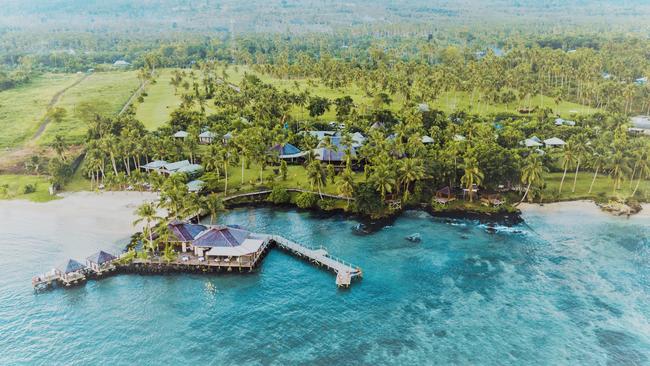
8 YEARN TO RETURN
No writer captured the beauty of the South Pacific like Englishman W Somerset Maugham. He travelled to the region in 1917, and wrote a series of short stories, warning: “Once you have experienced Polynesia, stay; to fail to do so means spending the rest of your life yearning to return.” His anthology Rain and Other South Seas Stories contains Mackintosh, the tale of a British assistant to the governor of Samoa. It details the clash of ancient Samoan customs with colonial rule. A century later, these traditional ways, known as Fa’a Samoa, are still adhered to; paramount chiefs (not police) rule villages and life exists almost as simply as it has for 3000 years. Settle into the Samoan way at luxurious Sinalei Reef Resort & Spa.
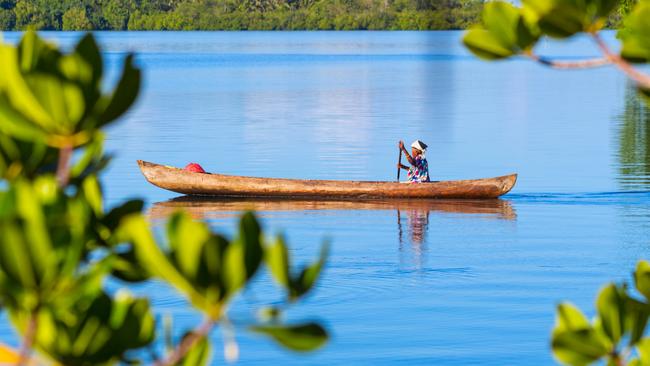
9 SHOCK VALUE
Regarded as the greatest adventure writer of all time, Jack London sailed through the South Pacific on his yacht, Snark, and wrote 10 books inspired by his voyage. It was his half-serious, half tongue-in-cheek account of navigating through the Solomon Islands, titled The Terrible Solomons, that really shocked his Western readers. In it he writes of cultural wars and cannibal headhunters; of natives having a “hearty appetite for human flesh and a fad for collecting human heads”. He spent most of his time in Malaita Province, 30 minutes’ flying time east of the capital, Honiara, and detailed his time with “the salt water people” who built their own islands from coral in pristine Langa Langa Lagoon. Visitors can stay in rustic overwater bungalows at Serah’s Lagoon Hideaway and gain cultural insights on guided boat tours.
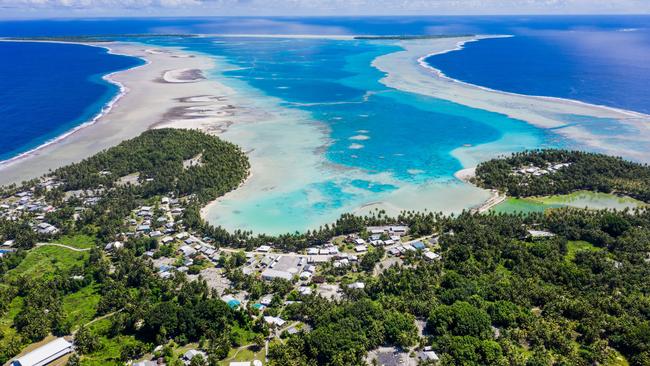
10 PERFECT PUKAPUKA
No celebrated writer went further into the South Pacific for his craft than American Robert Dean Frisbie. Advised to leave the US for warmer climates by his doctor, he moved to Tahiti but opted for even more solitude. He took a supply ship to Pukapuka, one of the most remote of the Cook Islands, 1300km northwest of Rarotonga, with a population of 400. He lived there with his wife, a local woman who died at a young age, and their five children. He wrote six globally successful books about a lifestyle those in the West could only dream of. Pukapuka remains much the same as it was in Frisbie’s time, attracting barely a handful of tourists each year (mostly trans-Pacific sailors), despite the fact it has one of the South Pacific’s most pristine lagoons. Fly there as part of a five-day northern Cook Islands tour.
If you love to travel, sign up to our free weekly Travel + Luxury newsletter here.

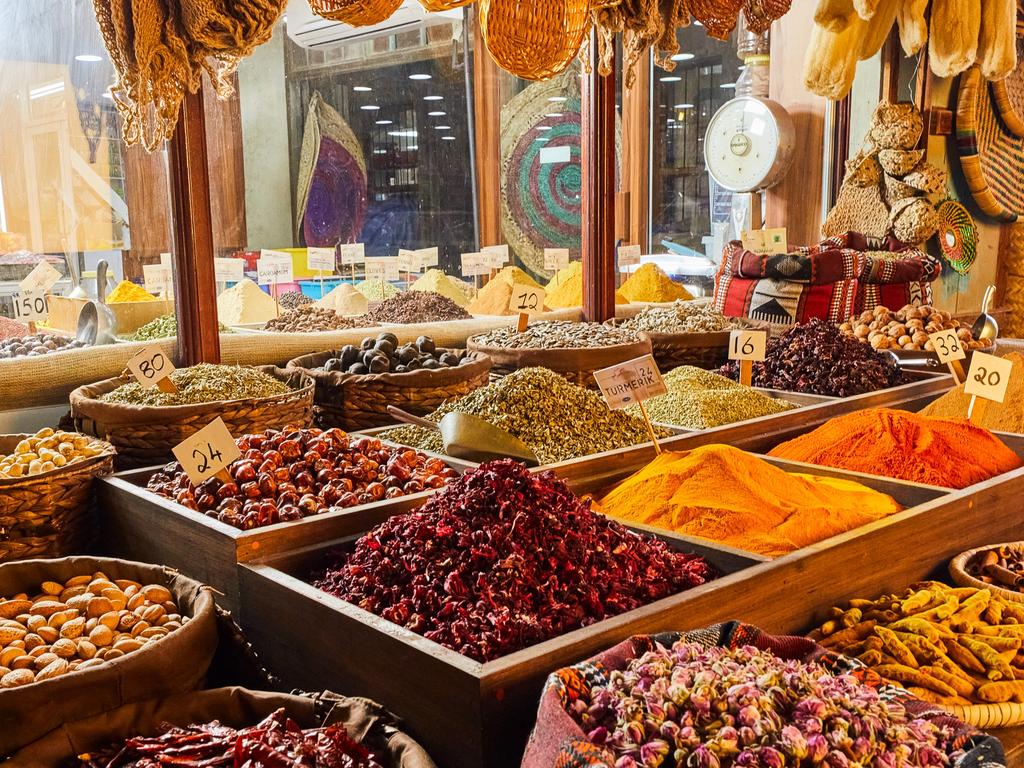
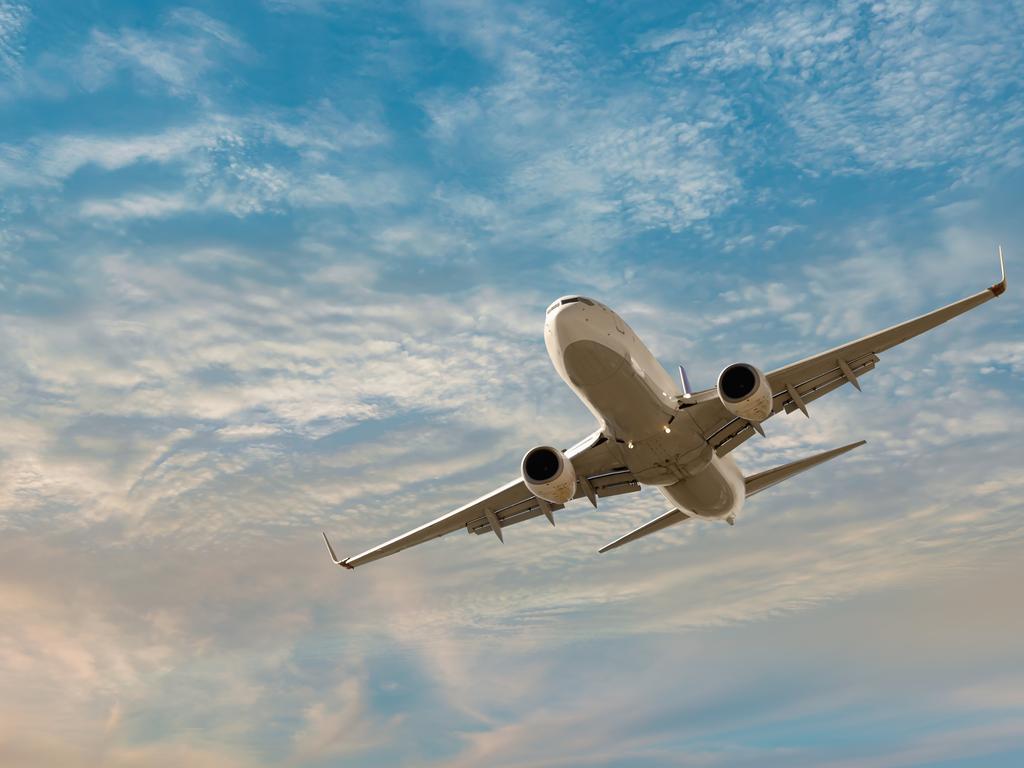
To join the conversation, please log in. Don't have an account? Register
Join the conversation, you are commenting as Logout